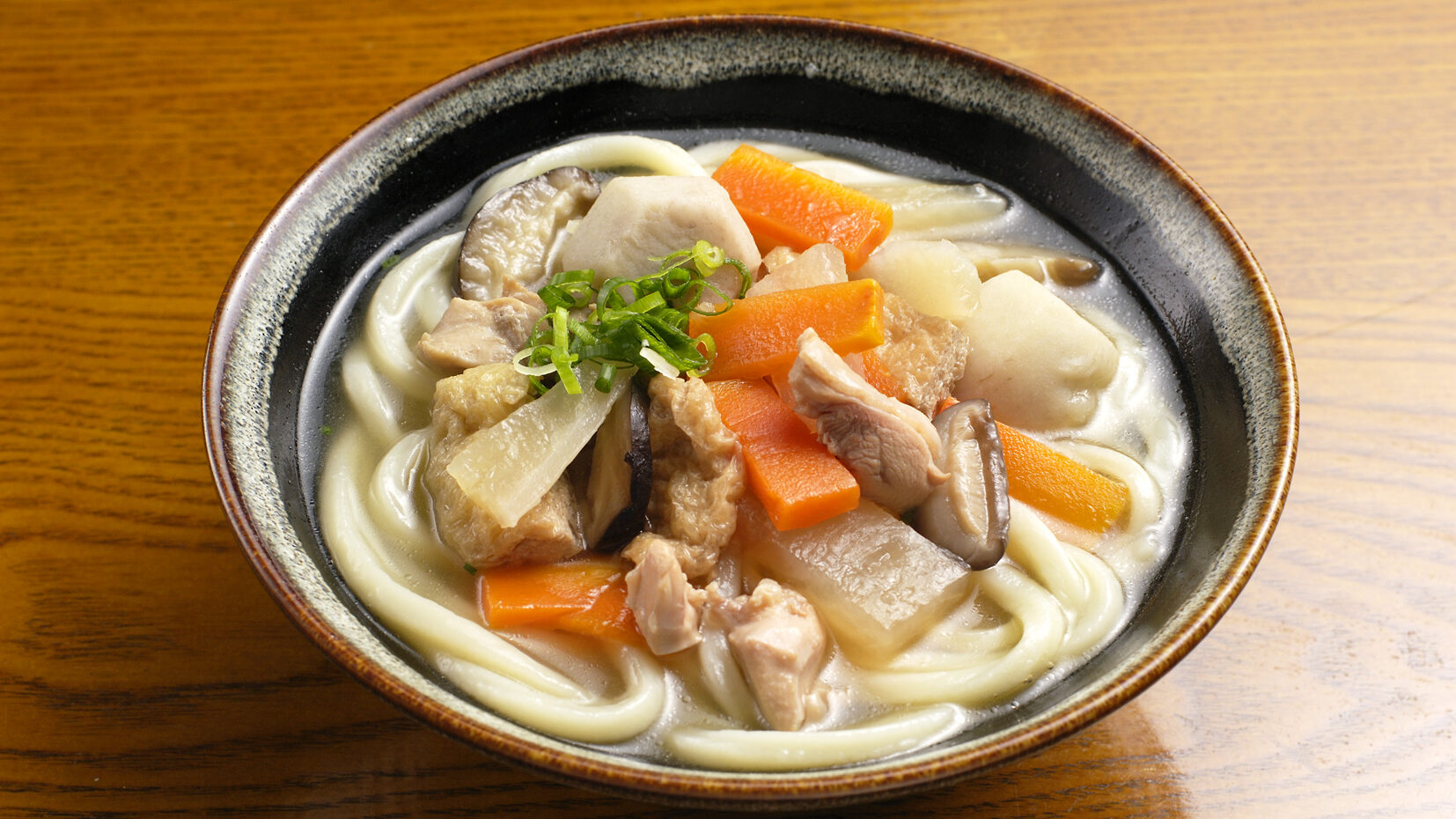
Alright, let’s talk about a real winner from Kagawa Prefecture: Shippoku Udon! This isn’t just any udon; it’s a hearty, veggie-packed delight that’s perfect for those cooler months. It’s a true taste of local goodness, so let’s get into what makes it so special.
Dish Name: Shippoku Udon
- Region / Location: Kagawa Prefecture (entire prefecture)
- Primary Area of Tradition: Entire Kagawa Prefecture
- Main Ingredients: Udon noodles, daikon radish, carrots, tofu, fried tofu (aburaage), green onions
How It’s Eaten / Served
Shippoku Udon is made by simmering various vegetables and fried tofu in a dashi broth, and then ladling it all over freshly cooked udon noodles[cite: 1]. The sweetness and umami of the vegetables, combined with the flavor of the fried tofu, make it a delicious and warming meal, especially during the colder seasons[cite: 1]. It’s a substantial dish, often enjoyed as a complete meal on its own.
Cultural Background and Preservation
Shippoku Udon is a representative local dish of Kagawa Prefecture, showcasing seasonal vegetables alongside the prefecture’s famous Sanuki udon[cite: 1]. Sanuki udon is known for its firm texture and smooth mouthfeel[cite: 1]. Several factors contributed to the popularity of udon-making in Kagawa[cite: 1]:
- The area’s low rainfall and warm climate are ideal for cultivating high-quality wheat, a key ingredient for udon[cite: 1].
- The Seto Inland Sea, particularly around Ibuki Island, is a rich source of anchovies, used to make the dashi broth[cite: 1].
- The extensive shallow coastlines and sandy beaches have historically supported salt production, and the resulting salt is used to make soy sauce, another important ingredient, in places like Shodo Island[cite: 1].
Udon’s deep roots in Kagawa are evident in historical records, with udon shops depicted in the “Konpira Festival Screen” from the Edo period[cite: 1].
Shippoku Udon is typically enjoyed from autumn to winter, when winter vegetables are in season[cite: 1]. It’s a common home-cooked meal during the colder months and is also served to guests[cite: 1]. Many restaurants offer it as a seasonal menu item[cite: 1]. Sometimes, it’s even eaten at the end of the year instead of soba noodles.
While the base is udon and seasonal vegetables in a broth, there are many variations[cite: 1]. Common additions include thinly sliced green onions and grated ginger as a garnish[cite: 1]. While the broth is often made with dried sardines, some families use bonito flakes or kombu[cite: 1]. Other ingredients like satoimo (taro root) and shiitake mushrooms, as well as chicken or pork, are often added[cite: 1].
In Kagawa Prefecture, it was once customary to make udon by hand for special occasions like New Year’s, festivals, and to entertain guests[cite: 1]. Today, there are numerous udon restaurants throughout the prefecture, attracting tourists from all over who come to enjoy the famous Sanuki udon[cite: 1].
To preserve the tradition and quality of local udon, efforts are being made to cultivate and improve local wheat varieties, such as “Sanuki no Yume”[cite: 1]. There are also initiatives to pass down the art of making udon by hand, with udon-making experts teaching in elementary schools and community gatherings[cite: 1].
Additional information:
- Daikon (大根): A large white radish.
- Aburaage (油揚げ): Deep-fried tofu pouches.
- Sanuki Udon (讃岐うどん): Udon noodles from Kagawa Prefecture, known for their firm and chewy texture.
- Kombu (昆布): Kelp, a type of seaweed used to make dashi.
- Satoimo (里芋): Taro root.
The information about regional cuisine featured on this website (Piggy's Grandma of Japan) is summarized and adapted from the Ministry of Agriculture, Forestry and Fisheries of Japan (MAFF) website, "Our Regional Cuisines"Additional commentary is provided based on the unique experiences and perspectives of the site's editors.
The copyright for the original content regarding regional cuisine belongs to the Ministry of Agriculture, Forestry and Fisheries of Japan.
The summaries and adaptations published on this site are intended for informational purposes only. Piggy's Grandma of Japan does not guarantee the accuracy or completeness of this information. For the most accurate and complete details, please refer to the original pages on the MAFF website.


